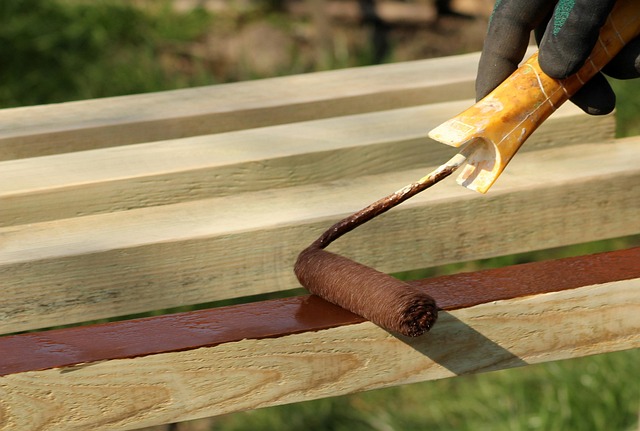Crack repair is vital for maintaining concrete slabs' structural integrity, preventing safety risks, and extending lifespans. Root causes like construction flaws, temperature changes, or structural weaknesses must be addressed. Restoration involves evaluation, crack repair techniques (injection, slabjacking), and material selection (epoxy, polyurethane, silicone). Best practices include early damage detection, regular maintenance, and professional estimates for accurate budgeting. DIY repairs without expertise can cause further damage; using incompatible materials risks discoloration. Regular inspections and preventative measures like sealing and drainage ensure long-lasting results.
Slab restoration is a crucial process for maintaining structural integrity and aesthetic appeal in both residential and commercial spaces. Understanding slab damage, its common causes, and the impact of crack repair is essential for property owners and contractors alike. This article explores various aspects of slab restoration, from evaluating repair scope and materials to best practices and cost considerations, focusing on effective crack filling techniques that ensure long-lasting solutions. Learn how proper maintenance can prevent future issues, making your slab restoration project a success.
Understanding Slab Damage: Common Causes of Cracks

Slab damage, often manifested as cracks, is a common issue that requires prompt attention for effective crack repair. Understanding the causes behind these cracks is essential in mitigating future problems. One of the primary culprits is settlement, where the slab’s surface sinks due to improper compaction during construction or changes in soil conditions beneath it. This can lead to hairline cracks that, over time, widen and become more noticeable.
Another frequent cause is thermal expansion and contraction. Extreme temperatures cause concrete to expand and contract, putting stress on the slab’s structure. This movement, coupled with heavy loads above, can result in significant cracks. Additionally, structural weaknesses due to poor design or construction practices, such as inadequate steel reinforcement, may also contribute to crack formation. Identifying these causes is crucial for effective crack repair strategies.
The Impact of Crack Repair on Structural Integrity

The structural integrity of a slab is significantly influenced by crack repair methods. Cracks in concrete slabs can weaken their overall strength and stability, leading to potential safety hazards and increased vulnerability to further damage. Promptly addressing cracks through effective crack repair techniques is essential for maintaining the structural soundness of buildings and infrastructures.
Proper crack repair involves filling the cracks with suitable materials like epoxy or polyurethane, which not only stops the spread of cracks but also reinforces the slab. This process helps prevent collapse or instability, ensuring that structures remain safe and secure over time. Effective crack repair is crucial for preserving the lifespan of slabs and mitigating risks associated with structural failures.
Evaluating the Scope of Work: Types of Slab Restorations

Evaluating the scope of work is a crucial step in slab restoration, as it determines the type and extent of repairs required. This process involves assessing the overall condition of the slab, identifying damage such as cracks, heaves, or sinkholes, and understanding the history of the structure to predict potential future issues. Types of slab restorations vary based on these assessments, ranging from minor crack repairs to complete replacements.
Crack repair is one of the most common restoration tasks. Minor cracks can be addressed with injection methods that fill and stabilize them, preventing further damage. More extensive cracks or those resulting from structural issues might require more significant interventions, such as slabjacking (lifting and stabilizing the slab) or even full replacement. Each approach is tailored to address specific challenges, ensuring a durable and safe walking surface.
Materials and Techniques for Effective Crack Filling

When it comes to crack filling, choosing the right materials is paramount for effective slab restoration. The primary focus should be on using high-quality, flexible sealants designed specifically for concrete repairs. These products are formulated to withstand environmental stressors and provide long-lasting protection against further damage. Common options include epoxy injections, polyurethane foams, and silicone-based sealers, each with unique properties tailored to different crack severity levels.
The application techniques vary based on the chosen material. For smaller cracks, a simple injection of epoxy or polyurethane foam can effectively fill and support the slab. Wider gaps might require a more comprehensive approach, such as applying a thick layer of sealer and using tools to ensure complete coverage. Proper preparation, including cleaning and profiling the crack’s edges, enhances adhesion and longevity of the repair, making it crucial in crack repair processes.
Best Practices for Ensuring Long-Lasting Repairs

When it comes to slab restoration, implementing best practices for crack repair is paramount to ensuring long-lasting repairs. The first step involves assessing the extent of damage; identifying minor cracks early can prevent them from becoming larger, more costly issues. Utilize specialized tools and products designed for crack repair to achieve durable results. Filling cracks with high-quality epoxy or polyurethane ensures stability and prevents water penetration, which could lead to further damage.
Regular maintenance is another key practice. Regularly inspect slabs for any signs of cracking or wear and promptly address them. Applying protective coatings can also extend the lifespan of repairs by creating a barrier against moisture, chemicals, and other elements that might compromise the slab’s integrity. Proper crack repair, coupled with diligent maintenance, will contribute to a more durable and aesthetically pleasing surface.
Cost Considerations: Budgeting for Slab Restoration Projects

When considering slab restoration, budgeting is a crucial step. The cost of crack repair and overall restoration can vary greatly depending on several factors. One of the primary concerns is the extent of damage; severe cracks and larger repairs will obviously incur higher expenses. Additionally, the size and type of slab play a significant role; concrete slabs differ in thickness and composition, impacting material and labor costs.
It’s important to seek professional estimates for accurate budgeting. Experts can assess the project scope, providing insights into materials needed for crack repair and surface restoration. Remember that preventive measures, such as regular inspections and maintenance, can also influence long-term costs. By understanding these considerations, homeowners can better prepare and allocate funds for successful slab restoration.
Common Mistakes to Avoid During the Restoration Process

Restoring slabs, whether concrete or stone, requires careful planning and execution to achieve optimal results. A common pitfall many homeowners and professionals encounter is attempting DIY repairs without proper knowledge. Self-attempts at crack repair can lead to further damage if not done correctly, compromising the integrity of the slab. It’s crucial to understand that not all cracks are created equal; some may indicate structural issues, requiring professional assessment.
Another mistake to avoid is using incompatible materials or methods. Different types of slabs, whether concrete, marble, or granite, have distinct care requirements. Using the wrong products for crack filling or sealing can cause discoloration, efflorescence (white powdery residue), or even damage to the slab’s surface. Always research and select restoration techniques and materials suitable for your specific slab type, ensuring long-lasting results that preserve the beauty and functionality of your flooring.
Maintaining Your Restored Slab: Preventative Measures and Tips

After successfully restoring your slab, proper maintenance is key to preserving its appearance and longevity. One of the most important steps is regular inspection for any signs of damage or cracking. Cracks, no matter how small, can indicate underlying issues that may compromise the structural integrity of the slab over time. Promptly addressing crack repair can prevent further damage and costly repairs down the line.
Preventative measures include applying a suitable sealer to protect against moisture intrusion, which is a common cause of slab deterioration. Regular cleaning with mild detergents and avoiding harsh chemicals also contribute to maintaining the slab’s condition. Additionally, ensuring proper drainage around the slab’s perimeter helps prevent water accumulation, which can lead to heaving and cracking. Regular maintenance checks will allow you to identify issues early on, making it easier and more cost-effective to address them.
